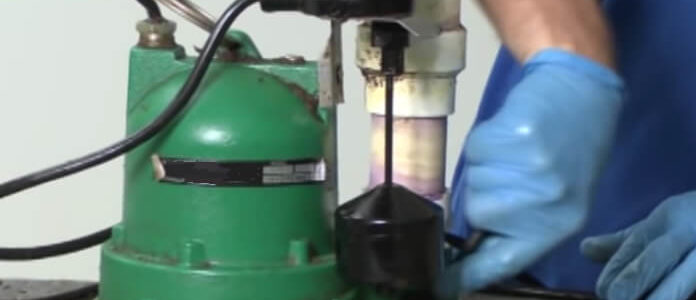Routine Sump Pump Service Check A Top Priority To Prevent Basement Flooding
Time to spring clean your sump pump. The need to check your basement pump and ensure it receives a full and thorough service maintenance is more a top priority than ever before. The reasons have been, once again, all too stark for the many unfortunate flood victims earlier this year.
February 2020 was the wettest month in England and Wales since records began in 1766 with 169.6 millimetres (6.68 in) of rain. Three major storms caused extreme flooding to around 1,400 properties each time. Climate scientists say that we need to be prepared for a 2°C rise in global temperatures, at least. The Environment Agency and the Met Office calculate that winter precipitation could rise by up 35 per cent by 2070, putting more than 5 million homes and business at risk of flooding in the decades ahead.
Article Chapters
Significant build up of deposits in basement pump missing just one service check
Looking after your basement pump to ensure it will cope with the risk of extreme rainfall in the winter ahead should be as routine as also having your boiler/central heating annually checked. Sump pump maintenance is necessary to prevent the build up of dirt, mud, contaminants, fatty deposits and limescale, which can all seriously reduce running efficiency and prevent a free flowing pump working to full capacity.
A service engineer looking at a basement sump pump that has missed only one yearly maintenance check can often find blockage and damage caused by the significant build up of deposits, and the increased risk of a seized up float failing to switch the pump on. In far too many cases. the service engineer was only called after the owner was horrified to find that their pump failed to work during a heavy flooding event.
Sump pump debris causes a blocked float and jammed impeller
Ensuring the sump pump float is in full working order is always top of the check list. As water rises in the sump pit, the float also rises and the pump starts to drain water from the pit. As a vital working part, it is also one of the most vulnerable to failure if not properly maintained. Another important component is the check valve, which actually triggers the sump pump to remove water. A failed check valve may be responsible for not preventing water returning to the pit.
A jammed impeller – which forces water through to the discharge pipe – can be another top cause of a sump pump failure. Failure of the float or impeller is often the result of dirt, mud and other debris in the sump pit entering through the protective screen. Regular service maintenance will ensure a thorough cleansing of both pump, parts and sump pit.
Electrical short a “significant” cause of a failed sump pump
It’s also very possible that there is no power at all running to the pump. One recent survey of more than fifty failed sump pumps discovered a significant cause was a deterioration in the isolation between the windings and earth causing a short and burnt windings. However, service engineers often find that the pump is no longer plugged in properly or a circuit breaker has tripped.
The spring or summer months are always the best times for doing any refurbishment and decoration work, which should include the basement and a service check of the sump pump. Home and property owners who live in flood prone areas will sure to be focused on ensuring their pumps are in full working order before the autumn arrives.
Spring clean your basement pump
Order a full service check today!
TEL 01634 215192

